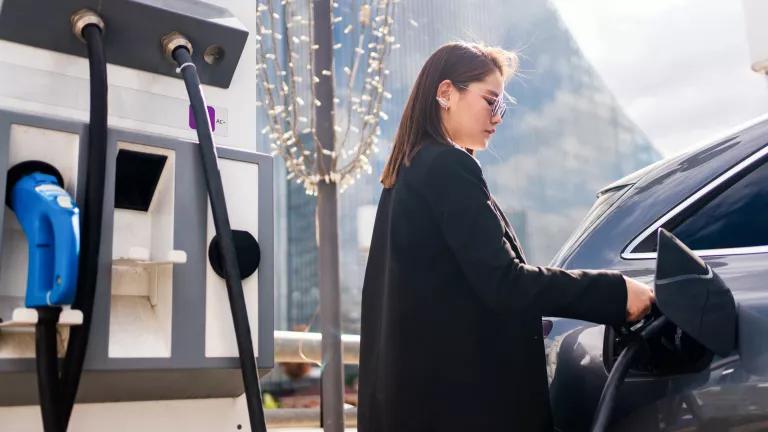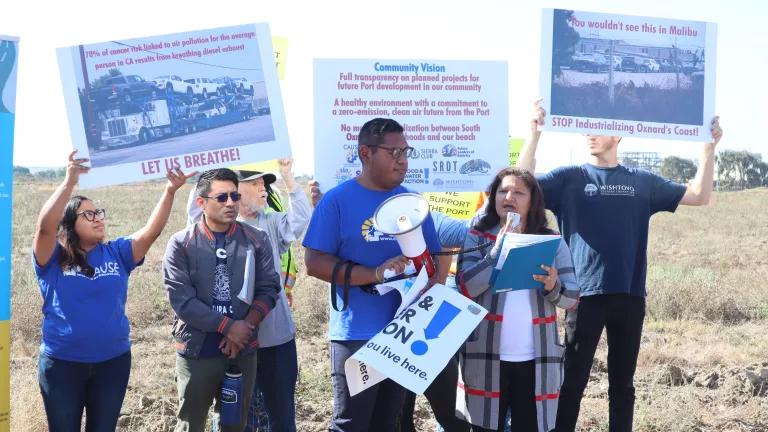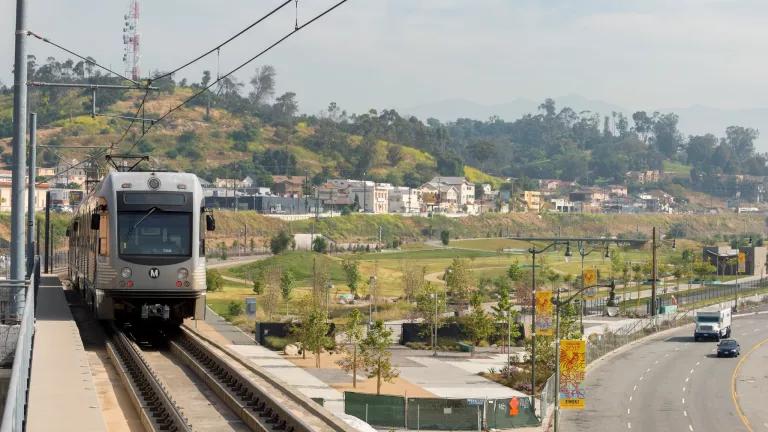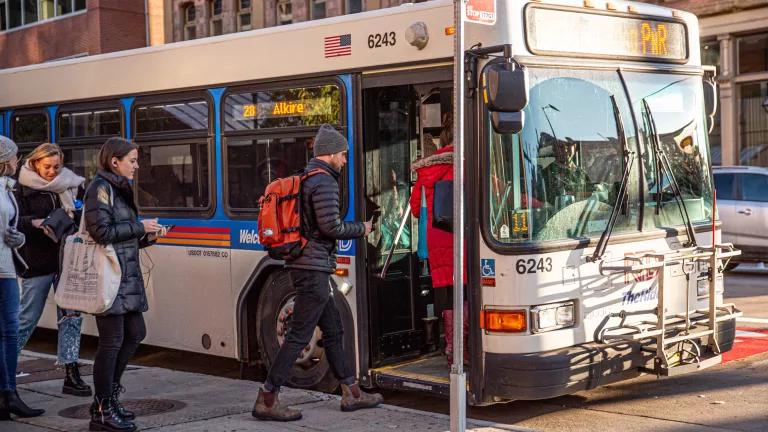Clean Car Rules: What they Mean for States
States that are trying to address climate change, cut energy costs for residents, and attract jobs just got a new tool to accomplish all those goals.

Source: Getty Images
On August 25, the California Air Resources Board adopted the Advanced Clean Cars II (ACC II) regulation, which sets standards that will achieve 100% new zero-emission vehicle sales in California by 2035. Now that California has approved these standards, other states can choose to adopt them. These more ambitious tailpipe emission standards will go into effect after the Environmental Protection Agency grants California a waiver under the Clean Air Act to implement these rules.
Currently, 17 additional states have adopted California’s earlier clean car standards—which ends in model year 2025. Together, these states and California represent more than 40% of the U.S. car market. To continue to accelerate the transition to a zero-emission vehicle future and have residents realize the benefits of this transition, states should now adopt the ACC II standards.
So, what is the ACC II regulation? What will it mean for other states? And how can states move forward with adoption of the new standards?
What the New Standards Mean for Other States
The ACC II standards are the first in the world to provide year-over-year sales requirements culminating in 100% new vehicles sales being zero-emission. ACC II will require almost 70% of the vehicles sold in California to be electric by the end of this decade, with increases sales requirements leading to all new vehicles fully electric or plug-in hybrids by 2035.

California achieved more than 16% ZEV sales in the first quarter of 2022, making the increase to 35% sales by 2026 readily achievable. However, the California Air Resources Board, which set these standards, recognized that other states do not currently have the same sales percentages as California and included a variety of flexibilities (also known as vehicle values) in the regulation that will help manufacturers achieve compliance in states throughout the country.
These flexibilities include:
- Early Compliance Credits—which allow manufactures to start earning credits on vehicles sold in the state two years prior to the start of their Clean Cars II program;
- Historical Credits—which allow manufacturers to use a certain percentage of credits earned in the Advanced Clean Cars I program (which goes through 2025) to be used to meet the requirements in ACC II;
- Environmental Justice Credits—which allow manufacturers to earn additional credits for lower cost vehicles, ZEVs placed in community car share programs or related incentives to encourage sales to low-income community members;
- Credit “Pooling”— which allows manufacturers to transfer credits earned by ZEVs sold in a state with high ZEV sales towards another state that has lower sales;
- Fuel Cell Allowance — which allows manufacturers that sell fuel cell vehicles in one state are awarded additional credits that can be used in another state.
The Environmental Justice Credits are available through 2031, and the remainder of these flexibilities can only be utilized through model year 2030. However, there are additional mechanisms that will be available throughout the full program that manufacturers can use to achieve compliance:
- Carrying credits across model years—automakers can bank extra credits earned in one model year to use for future compliance, and have three model years to make up any deficit;
- Trading—automakers can buy extra credits from other manufactures that are over complying with the regulations.
All of these flexibilities help to lower the overall stringency in the first five years of the program for other states and will help for automakers to achieve the program's annual requirements.
With all the flexibilities in play, it’s hard to fully predict what the requirements will look like in individual states, but analysis by Shulock Consulting estimates that in model year 2026, an average state would need to achieve about 17-23% electric vehicle sales, ramping up to approximately 54-56% in 2030. With zero-emission vehicle sales ramping up, and flexibilities expiring, by 2031 the other states would reach the same level of ZEV sales as California.
The chart below shows a reasonable ACC II scenario in a non-California state as compared to the “business-as-usual” zero-emission vehicle sales that the EPA assumes will be needed to meet the recently adopted federal greenhouse gas tailpipe standards, which run through model year 2026. The graph below assumes continued of these standards at the 2026 level, but EPA plans to propose new standards for 2026 and beyond, which will increase the business-as-usual sales level for future years.

What are the Mechanics of States Adopting the ACC II Rule?
Now that Air Resources Board has adopted ACC II, states that wish to can start their regulatory processes to adopt the standards—and five other states have announced plans to do so this year. Before official adoption, however, states must wait for the Office of Administrative Law in California to sign-off on the regulation, which will likely happen in October or November.
Under the Clean Air Act, states must give manufacturers a two-year “lead-time” when they adopt the ACC II rule before the regulations can go into effect, as the regulatory requirement is on the automakers, not the individual state. And because vehicle model years are often one year ahead of calendar year, that means that in order to participate in the first year of ACC II (model year 2026), states must adopt the rule by the end of calendar year 2022. If a state chooses to adopt next year, they will be able to start the program in model year 2027 and at that level of stringency. If they adopt in 2024, they will start the program in model year 2028, etc.
When developing their individual rulemaking processes, it is important to note that states Advanced Clean Car II standards are required to be identical to the California standards. However, regarding the environmental justice credits, states are given additional flexibility to develop programs that meet the same goals as the California environmental justice programs, and a state can choose to only adopt specific model years of the program, such as through MY 2032.
Given the required two-year heads up mentioned above, states can—and should—move forward with adopting ACC II as soon as possible to start achieving the benefits of these rules. EPA will also have to grant California a new waiver to implement its standards before the standards (in California and in other states) can be enforced. The current waiver goes through model year 2025, so California will likely apply for this new waiver within the next year or two.
Driving to a Clean Future
Seventeen states have previously recognized the importance of adopting the Clean Car Standards. But as the climate crisis continues to worsen, it is vital that those states—and others—further accelerate the transition to zero-emission vehicles that is already occurring to maximize all of the benefits that clean transportation offers. The future is zero-emission transportation—and now is the opportunity to bring the future here faster.




